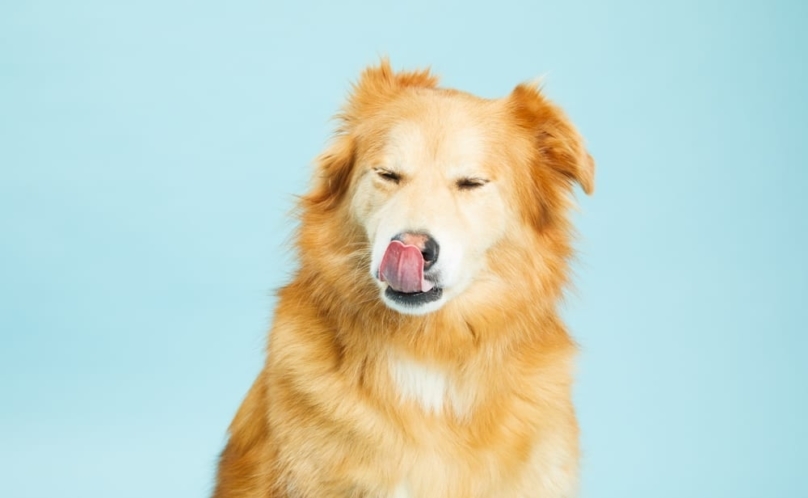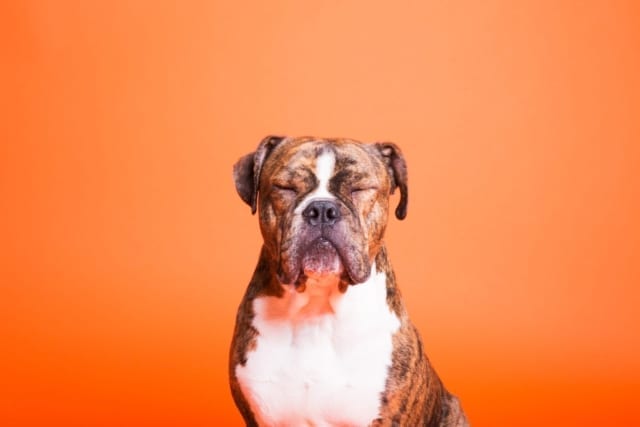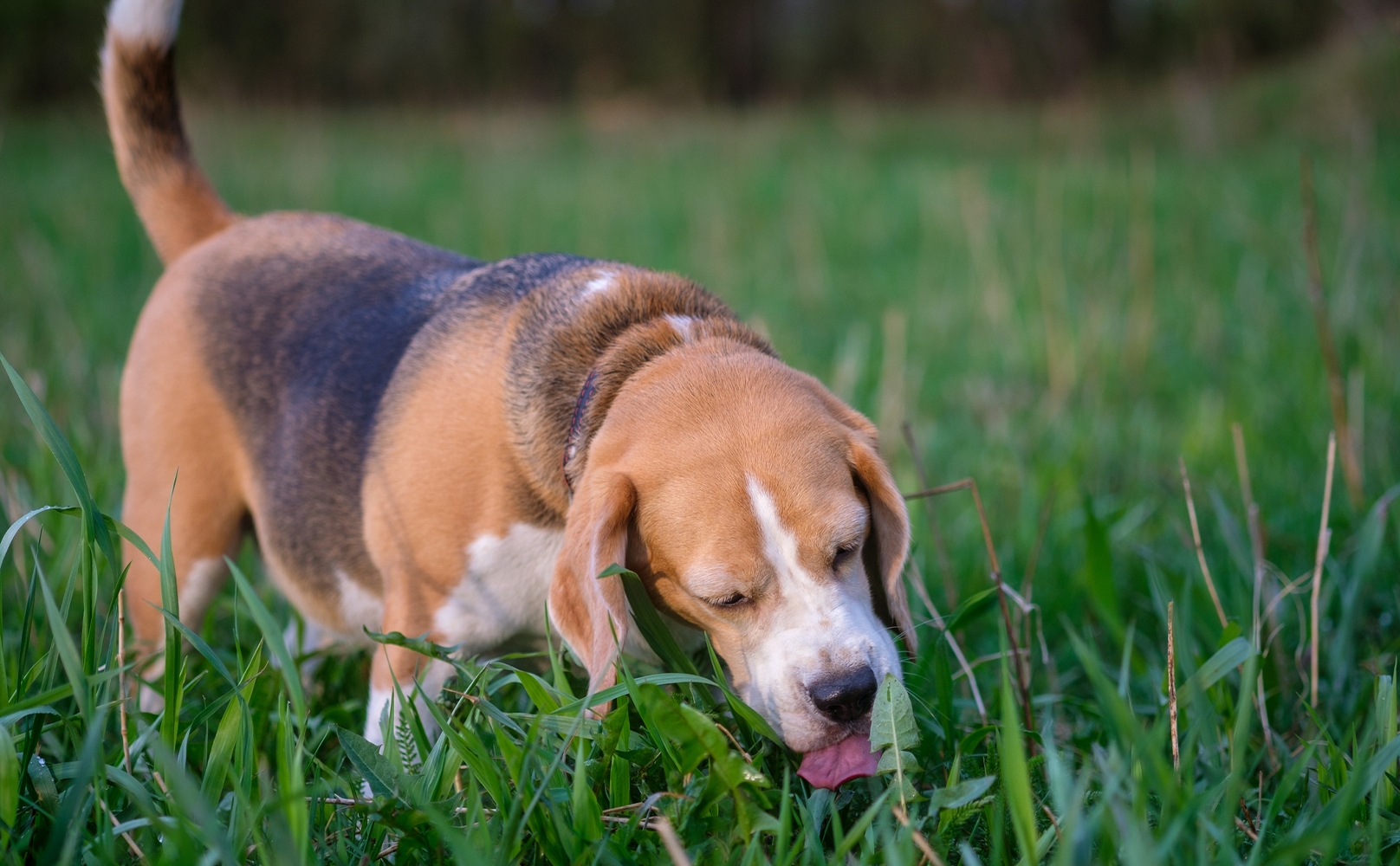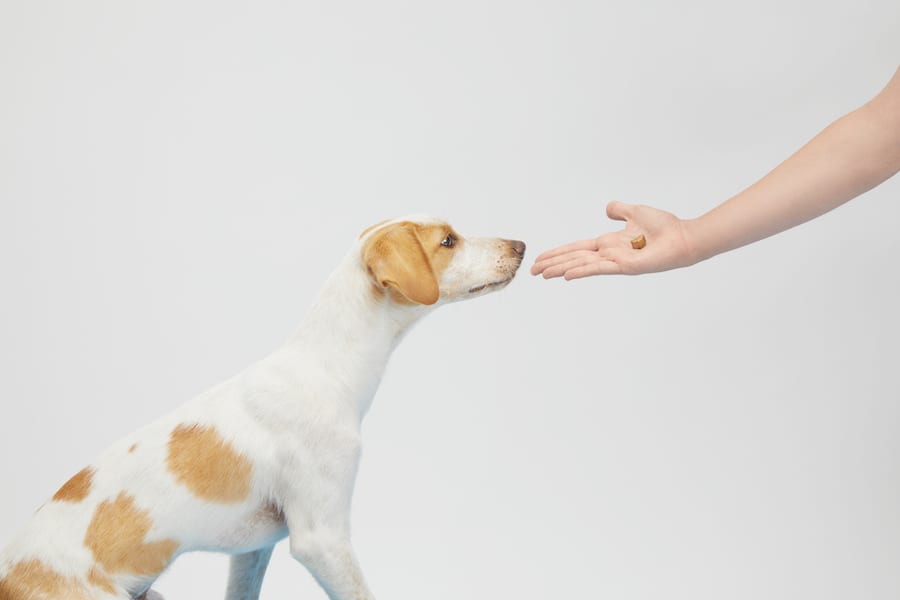If you look in most medicine cabinets, one of the first medicines you’re likely to see? Benadryl.
Benadryl is an extremely common antihistamine (allergy medication) used to treat allergy symptoms like a runny nose, sneezing, or itchy eyes. For humans who have allergies, Benadryl can a game-changer. But what about for pups?
While vets typically don’t recommend giving human medication to dogs, Benadryl is one medicine that often gets their stamp of approval. Many vets recommend giving your dog Benadryl for everything from insect bites to anxiety. But what are the guidelines for Benadryl dosage for dogs? How often can I give my dog Benadryl? What is Benadryl an effective treatment for? And when (and under what circumstances) should you give Benadryl to your pup?
What Is Benadryl?


Before we jump into how to use Benadryl for dogs, let’s talk about what, exactly, Benadryl is.
Diphenhydramine HCL, the active ingredient in Benadryl, is a receptor antagonist. Now, if you’re scratching your head and thinking “H1 antaga-what?!,” let us explain.
Throughout your body, there are proteins called histamine receptors. When your body produces histamine, it binds with these receptors and creates all of those pesky allergy symptoms (like sneezing or an itchy throat).
A receptor antagonist blocks the histamine receptors—so, if there’s histamine in your body, it can’t bind with the receptor and wreak all that allergy-related havoc. Think of it like this—the histamine receptor is a parking spot. When you take a receptor antagonist like Benadryl, it’s like parking a car in that spot—so when histamine shows up, the spot’s already taken. Benadryl doesn’t stop the body from producing histamine—it just stops it from binding to the histamine receptors and causing adverse reactions in the body.
Is It Safe To Give My Dog Benadryl?
Now that you know how Benadryl works, let’s talk about the most important question of all—when it comes to Benadryl for dogs, is it safe?
And the answer is—yes, it is. But it’s important to educate yourself and talk to your vet before you give your dog any medication, and that includes Benadryl.
Technically speaking, Benadryl isn’t FDA-approved for use in animals. But Diphenhydramine HCL has a number of off-label uses, and prescribing Benadryl for dogs is common practice with vets around the country.
That being said, you shouldn’t give your dog Benadryl before consulting with your vet. Your vet will be able to tell you if A) Benadryl is an effective treatment for whatever ailment your pup is struggling with, b) there are any potential side effects or drug interactions you should be on the lookout for, and c) whether it’s safe for your dog to take, given their medical history and current list of medications.
When Should I Give My Dog Benadryl?


Benadryl is an allergy drug, so obviously, it makes sense to give it to your dog if they’re struggling with seasonal or environmental allergies.
Benadryl can help relieve your dog of mild-to-moderate allergy symptoms, including:
- Itching and Itchy Skin
- Sneezing
- Coughing
- Runny Nose
- Runny Eyes
- Swelling
- Hives
If you know what your dog is allergic to, it’s better to give your dog Benadryl before they’re exposed to the allergen; so, for example, if you know they always have an allergic reaction to the dander at the dog park, give it to your pup 30 minutes to an hour before you go. However, Benadryl works pretty quickly—so if you give your dog Benadryl after they have an allergic reaction, it should only take 30 minutes to an hour to start providing relief.
If your dog struggles with more serious allergy symptoms, Benadryl might not do the trick. Talk to your vet to get your dog on the proper medications for their allergies (and to give your sweet pup a little relief from all the sneezes and itchiness!).
Also, if your dog has a severe allergic reaction or goes into anaphylactic shock, it’s important to get them emergency medical care immediately.
Benadryl Dosage for Dogs: How Often Can I Give My Dog Benadryl?


So, Benadryl is safe for dogs—but now it’s time to talk the correct dosage.
Before giving your dog any medication, you’re going to want to talk to your vet to get the green light—and that includes on how much Benadryl to give your pup. In certain cases, your vet may recommend upping the dosage (for example, if your dog gets bit by a pup), or lowering the dosage (for example, many vets recommend children’s Benadryl, which has smaller amounts of Diphenhydramine HCL, for dogs like chihuahuas) to best suit your dog and their needs.
Just like with any human medication, the dose of Benadryl for dogs is super important. Too small a dosage and they won’t get any relief from their symptoms. Too high a dose and you run the risk of serious side effects or overdose. Overdose symptoms include:
- Rapid heartbeat
- Constipation (can’t poop)
- Dilated pupils (the black center of their eye becomes really big)
- Agitation/aggression
- Seizures
So how, exactly, do you find the right dosage for your dog?
The standard dosage guidelines are 1 mg of Benadryl per pound of body weight two to three times per day. So, if your dog weighs 25 lbs, you can give them a 25 mg dose of Benadryl for dogs every eight to 12 hours.
However, we cannot stress enough: talk to your vet first before giving your dog any medication! There are no shortage of reasons why Benadryl might be dangerous for your pup, including if they have any of the following conditions:
- Heart disease
- Kidney disease
- Glaucoma
- Thyroid issues
- Seizures or epilepsy
- High blood pressure
- Asthma
- Pregnant/breastfeeding
- If they are taking any other medications
Can I Give My Dog Benadryl For Anxiety?
If your dog has anxiety, you know it can be a struggle—for both you and your pup. Your dog might become anxious when you leave him at home alone (also known as separation anxiety), when he has to interact with new dogs or people, or in reaction to loud noises (like thunderstorms or street traffic). Anxiety can cause your dog to react in a number of ways; anything from excessive barking to scratching at the door (and causing some serious damage in the process) are typical side effects of canine anxiety.
Now, Benadryl is officially a drug for allergies—but that’s not the only thing you can use it for. One of Benadryl’s most common (and popular!) off-label uses is as a treatment for anxiety—and that includes for your dog.
Benadryl has mildly sedative effects. When you give your dog anxiety, those sedative effects can help your dog keep from getting overly anxious—and keep any anxiety-related symptoms at bay. So, if you’re wondering “is Benadryl safe to calm dogs down?” the answer is absolutely.
One thing to keep in mind—Benadryl is great for anxiety, but those sedative effects can also make your dog sleepy. If you have any activities scheduled where your dog needs to be awake and alert, save the Benadryl for another time. And while we may sound like a broken record, please remember to always talk to your vet before giving your dog any medication!
How do I use Benadryl for my dog when traveling?
As we just mentioned, Benadryl is a great option to give your dog when they have anxiety. But even if you don’t have an anxiety-prone dog, there’s one activity that can make even the most chill dogs out there at least a little bit jumpy—and that’s traveling.
Traveling can be tough for your pup. Whether they’re traveling in your car or on a plane, chances are, they’re stuck in their crate or their carrier for hours on end. Plus, when you’re traveling, there aren’t many opportunities to give them the attention and comfort they need. If you’re traveling in a car, you’re either driving or strapped into one of the seats. If you’re flying, you have to obey airline rules and keep them in their carrier. It makes total sense that your pup would feel anxious in that situation!
Giving your dog Benadryl before they travel is a great way to help your pup manage their nerves during the long trip ahead. And as an added bonus, Benadryl may also help your dog with motion sickness—so you don’t have to worry about any mid-flight or mid-ride tummy issues.
Wrapping things up


You want your pup to feel as good as possible, as often as possible. And if your dog struggles with allergies, anxiety, or just good, old-fashioned travel nerves, Benadryl can be a great way to ensure they feel their best.
But one more time for good measure—before you give your dog ANY medication, including Benadryl, it’s important to talk to your vet. Let your vet know your dog’s history, any medications he is on (or has been on in the past), and why you think your dog might need Benadryl. They can give you the proper guidance on whether Benadryl is the right fit for your dog—and, if it’s not, what you can give your dog to make it feel better.






